I thought, “This is it; we’re heading into the outback.” I was driving an RV with my family on board. We had stocked up on water and food, filled the vehicle with petrol, and let my parents know where we were heading.
I was looking forward to the vast arid region. Just as the last hedge on the outskirts of Adelaide came to an end, I slammed on my brakes and everything in the vehicle jerked to a halt. A kangaroo had bounced over the hedge, landed in front of my vehicle and cheerfully bounced away without a care in the world. Don’t they teach kangaroos to look before they leap! This was my introduction to the outback, and I loved every minute of it.
After that incident, I expected a kangaroo to jump out from every bush, but we never had a close encounter again. The outback presents a stark contrast to the UK, so there are a few things to learn before you visit; however, it’s this difference that makes it all the more interesting and a great place to enjoy.
Where is the outback?
The outback is the central area of Australia, extending to the coast on the west side. Its area includes parts of New South Wales, Queensland, South Australia, the Northern Territory, Western Australia, and even a small part of Victoria.
The term “outback” originated a couple of centuries ago, when people referred to the area outside the populated coastal areas as “out back,” beyond where the towns were located.
What is it like?
This vast area is sparsely populated, with an average annual rainfall of less than 300 millimetres (11 inches). It’s a desert with red sand, small bushes and long roads that go on forever. You see signs that say things like Next Rest Stop: 150 Miles. It seemed amusing that they gave us such a long warning.
There is hardly any traffic and no buildings for miles; all you see is the red dust, and you hear the gentle breeze and the sound of flies. There is nothing to distract you from the feeling of being part of the land. Without the constraints of modern life, there is a feeling of freedom. You are a tiny dot in the vast landscape. Especially at nighttime, when the lack of light pollution lets you see hundreds of stars.
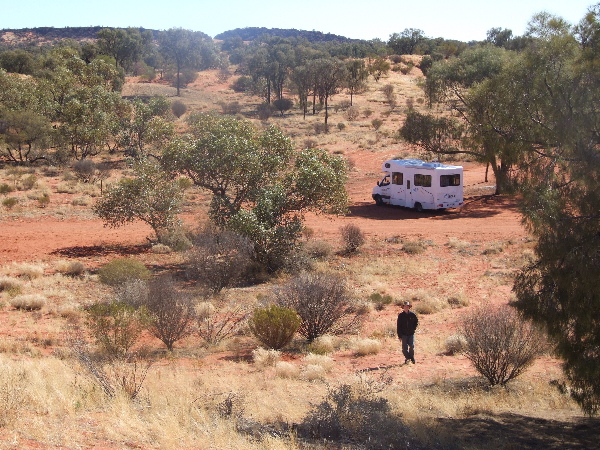
Living in the outback isn’t easy; you have to be independent without the easy access to facilities that many are accustomed to. One man told me he had to take three days off work to drive to the nearest dentist.
It can also be brutally hot. There are a few trees, but they don’t provide much shade. Its rocky terrain and a lack of different features for the inexperienced to recognise can make it difficult if you wander off the roads.
One of the things I liked was when you drive along the minor roads and pass another vehicle, the driver will hold their hand up to greet you.
When is the best time to visit the outback?
The best time to visit is between May and September when the temperature is cooler. Nights can be chilly, so be prepared if you’re camping. We visited in July and found the weather to be very pleasant, hot but not too hot.
During the summer, from November to March, it can be very hot, and only if you are used to extremely high temperatures will you be able to cope outside.
Is it safe?
Mobile phones
Mobile phone reception in the outback is unreliable or non-existent, so if you encounter problems, you must resolve them yourself. If your vehicle breaks down, you could have a problem unless you have some experience repairing vehicles.
If you stick to the main roads, you should find someone who drives by that you can flag down, although it can be a long wait on some roads. Hiring a satellite phone might be a good idea if you plan to go off the main roads.
Road trains
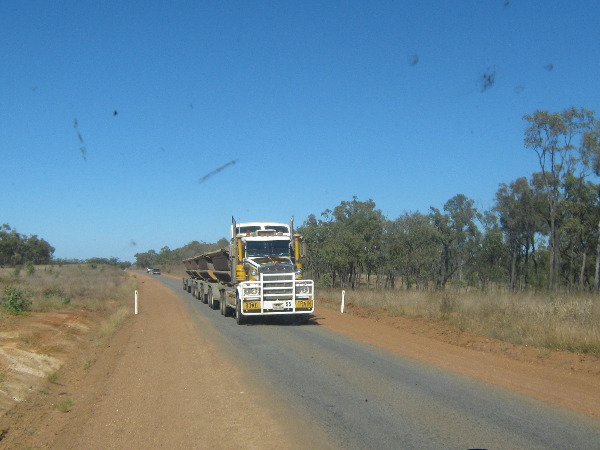
In the outback, there are many road trains. These are trucks which pull multiple trailers. Don’t overtake them if you can see a vehicle coming in the other direction, as road trains drive fast and take a long time to overtake. Serious accidents happen when not allowing enough time to overtake road trains.
Often, vehicles turn their lights on during the day so you can see if a vehicle is approaching. When you look ahead in the distance, it’s hard to tell if a vehicle is approaching you or moving away, but seeing the car headlights helps.
The roads
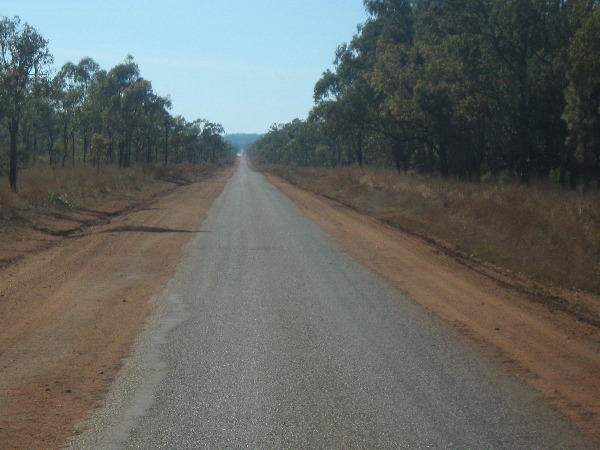
Many roads are fully sealed, allowing you to drive on them with a regular vehicle. If you have hired a vehicle, unless it is a 4WD, you will probably not be allowed to drive it off-road or on dirt tracks.
I encountered some roads where traffic in both directions shared the same single road, slightly larger than a standard single road. When vehicles approached each other in opposite directions, they moved over to the road’s edge.
By late afternoon, after driving all day and not seeing any other vehicles for hours, I found it difficult to remember that I had to share this road and pull over quickly.
There is also a lot of roadkill on the side of the road. I am not talking about small little animals you can easily drive over. I saw dead kangaroos and cows. It is a good idea not to drive at night because, without street lights, it is easy to hit an animal. I even saw a herd of camels wandering around.
The speed limit in some areas of the Northern Territory is 81 mph (130km/h), although some vehicles go faster.
Petrol
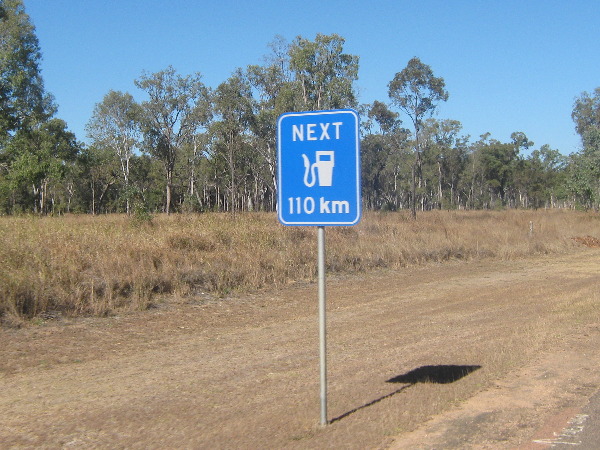
There are petrol stations on the main roads, but if you venture into remote areas, carrying an extra fuel canister is a good idea. In remote areas, the petrol stations might only sell diesel or be closed on weekends.
On our way to Coober Pedy, we ran out of petrol and had to flag down a vehicle. We had filled up our RV, and 30 minutes later, we came across another petrol station, but didn’t stop to top up more. That was a mistake. We found out later that some large vehicles don’t have enough petrol to get from the last petrol station to Coober Pedy with a full tank, especially if the wind blows against them.
We were rescued by an elderly Polish couple with a few dregs left in the bottom of their jerry can. Fortunately, it was enough to get us to the petrol station. Driving was stressful when the vehicle fuel sign was long past the empty level. Even after adding the dregs, the indicator still showed no improvement.
Water
Take bottles of water with you. If your vehicle breaks down or you have an accident, water becomes essential until you can be rescued. At one petrol station with a motel and campsite, a sign said it didn’t sell any water. There was also no water supplied for the RVs staying the night. Don’t rely on picking up water on the way to your destination.
Dangerous animals
There are dangerous animals in the outback. Although you are unlikely to encounter one, you should know about them so you can take precautions. Because we don’t have any dangerous animals in the UK, we tend to be overly anxious about them, but the extreme heat and dehydration are more dangerous.
Snakes—There are a few venomous snakes in the outback. One of the most dangerous in Australia is the Eastern Brown Snake. It is usually found on the East Coast, but it can also be found inland.
Snakes usually try to avoid people, so they will try to get away if you stomp your feet as you walk, but it isn’t necessary to go to such lengths.
Spiders—The redback spider is found in the outback. Its bite can be dangerous, but there is good antivenom. Just look before you sit down on a rock or put on your shoes.
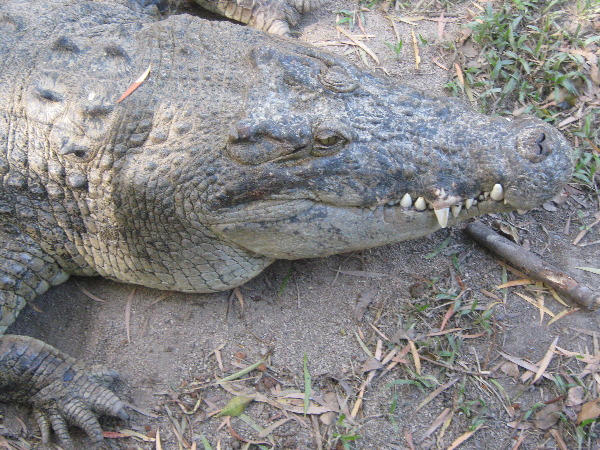
Saltwater crocodiles can be found across Australia, but mainly in the Northern Territory. Whether they are found in the outback depends on where you draw the boundary line. In any case, be careful around the edges of water. These crocodiles are aggressive. Check with the locals if any “salties” are nearby before swimming in ponds.
How to see the outback
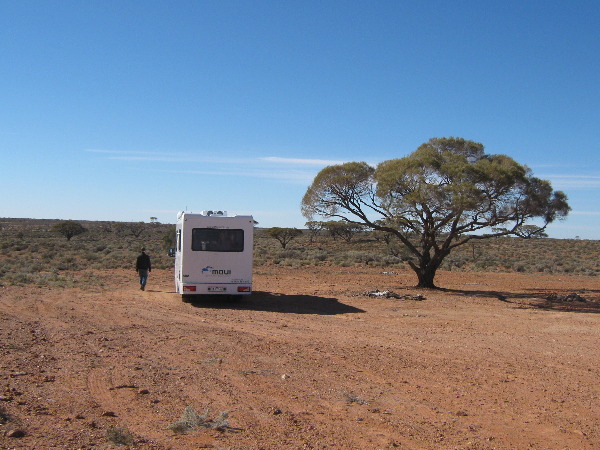
A motorhome (RV) is my favourite way to explore the outback. When I’m tired from driving, I can pull off the road and take a nap or have a cup of coffee. You can be self-sufficient with a motorhome as long as you remember to fill it with petrol.
If you plan to travel by car, ensure you have booked your accommodation. Toilets are available at petrol stations and some rest areas. A national map shows the location of all public toilets. Have some spare food with you in case your planned option is closed.
The Ghan train travels from Adelaide to Darwin through the outback, stopping at various places, including Alice Springs. Part of the outback experience is the feeling of openness and isolation, which I am not sure you would feel on a train full of people. However, you could arrange a private tour to more remote parts if you plan to stop.
There are bus companies that take you to places like Alice Springs. It can take almost 24 hours to get there from Adelaide, but at least you don’t need to do any driving.
Alice Springs has an airport, allowing you to fly into the outback and explore the surrounding area. We drove from Adelaide to Alice Springs and then flew to Cairns. This option will enable you to explore the outback without using up too much of your holiday time.
What is there to see?
Uluru (Ayers Rock) is the largest sandstone monolith in the world. It is 348 m (1,140 ft) high and 9.5 km (6 miles) in circumference, which seemed much longer when we walked around it in the hot sun. Take plenty of water.
You can no longer walk up Uluru, which is good as it wasn’t safe and a place of profound significance for the local Anangu people.
Crowds watch the monolith’s changing colours during sunset and sunrise, so get there early. While it is interesting to see, I prefer it when the crowds have gone. We watched both sunrise and sunset, and I don’t think it makes a difference which one you see.
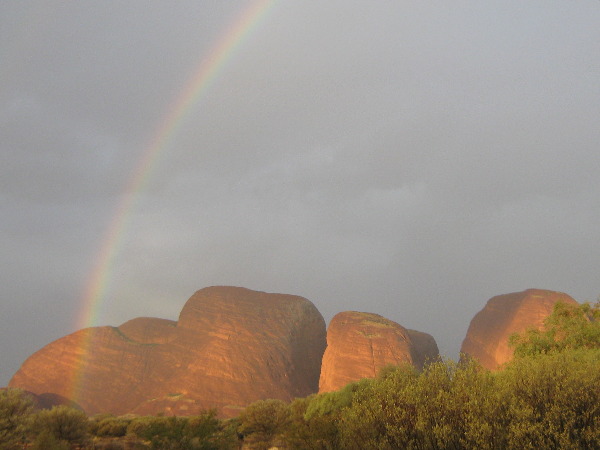
Kata Tjuta (The Olgas) is 36 large domed rocks, 25 miles (40km) from Uluru. There are several walking trails for varying abilities and a viewing area to enjoy the panoramic view of the domes. We did find a lot of flies around when we visited, one of my daughters wore an insect net as she doesn’t like insects much.
Alice Springs is a town almost in the centre of the outback with a unique character. There is plenty to see there. There is a Desert Park where you can see the plants and animals of the desert, including nocturnal animals. We also tried our first camel ride in Alice Springs. I never thought of riding a camel in Australia. If you want to try playing a didgeridoo, you can do so at the Aboriginal Australia Culture Centre. The Royal Flying Doctor Service Museum is another museum explaining life in the outback.
Simpson Desert is a large red sandy desert with fun dunes. Crossing the desert takes four or more days and is best for those with experience and a 4WD. However, you can use a guide for a safe, rugged challenge.
About 22 miles (35 km) from Birdsville is a 40-meter (130 feet) dune called the Big Red. It is a popular destination for watching the sunset and 4WD fanatics.
Kings Canyon is a spectacular 100-meter-high cliff wall. There are various walks here. One of the favourite walks is along the top of the sandstone wall, which takes 3-4 hours. Some people like to sit at the top to watch the sunrise, although to appreciate the view below you need to let the sun get a bit higher to show the different colours. If the cliff walk is too challenging, there is a gentle walk along the valley base, which takes 1 hour.
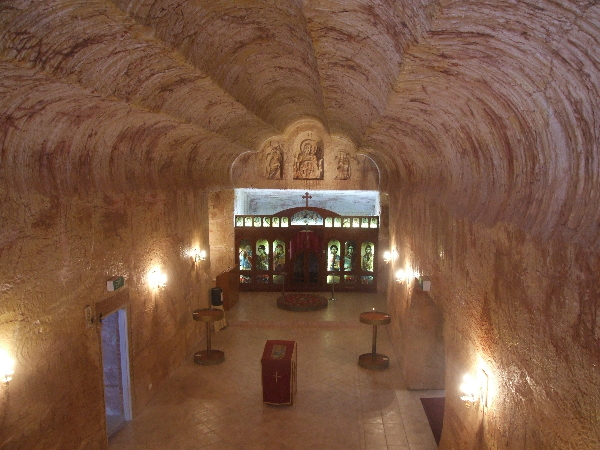
Coober Pedy—This town is the world’s opal capital, but it is fascinating because many people live in underground houses to escape the heat. We went on a guided tour and saw inside some of the underground dwellings and saw the underground church. We heard how when you want an extra room, you dig it out with a massive drill, and if you are lucky, you might find some opals to pay for the drilling.
If you can stay in an underground hotel, my children found it a unique experience. All the walls, floors, and ceilings were made of red dirt, and holes in the rock walls became cupboards.
This town and the surrounding desert have often been used as a film location.
Aboriginal Heritage
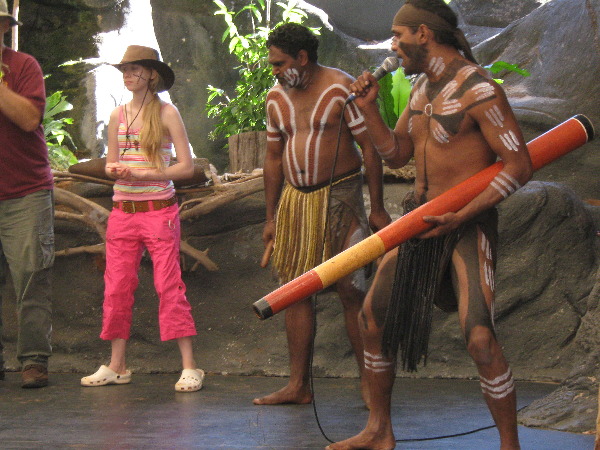
If you want to know more about Aboriginal heritage, the outback is the best place to visit. Here, you can see how Aboriginals connect to the land and their traditions.
There are many different Aboriginal nations, each with its own area, language and customs.
Take time to look in their craft shops and understand their work. I have a dot painting on the wall at home, and before I bought it, the lady explained what the circles and dots represented.
If possible, go on a culture tour and experience bush food or a bush walk. You can also learn about the myths and legends of the Dreamtime.
Summary
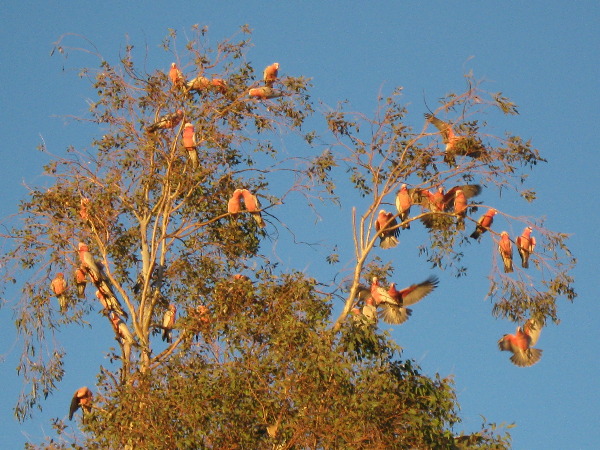
I love the outback, its freedom and vastness. You can spend weeks exploring it or fly to Alice Springs for a short visit. As you connect to nature, the rest of the world disappears. This is a place untouched by time. Although there are mines and cattle ranches, there are still vast areas which have remained the same for hundreds of years.
When you travel in the outback, you need to take sensible precautions. You can’t treat it like you would a city park.
I can’t explain why a place with so few attractions is so appealing. We must be wired to enjoy nature; here you can see it in its raw form.
Come and see for yourself. Enjoy the hum of insects or a noisy flock of lorikeets. Spot the kangaroos, especially at dusk. Feel the sun scorching the earth and at the end of the day, enjoy some of the best sunsets in the world.
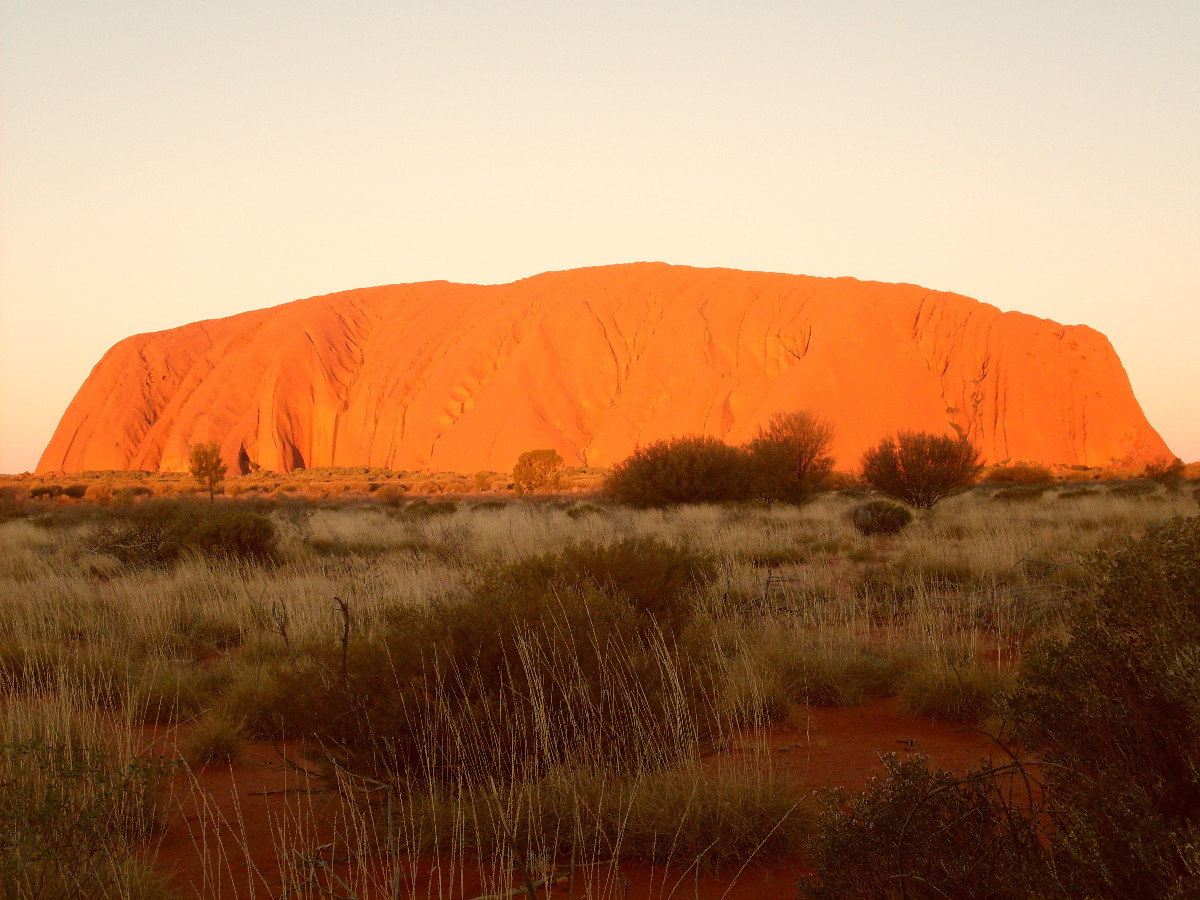
Leave a Reply